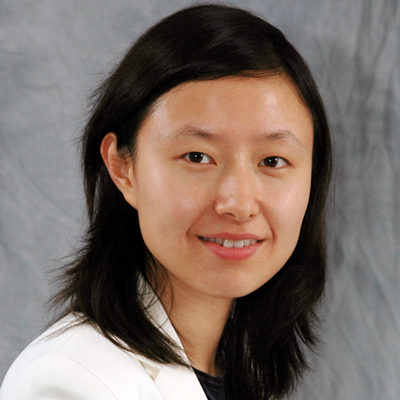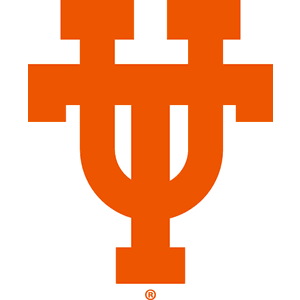Spectrum management, localization and tracking, big data analytics, wireless network management, 4G/5G
We all want fast and reliable Internet on our mobile devices, to browse the web, stream videos and music. As wireless networks become increasingly popular, wireless carriers are running out of spectrum to accommodate users’ ever increasing hunger for network bandwidth. Dr. Lili Qiu, Professor of Computer Science at the University of Texas at Austin, develops a series of novel approaches to manage spectrum, automate diagnosis and planning, optimize performance, and enable new applications.
Dr. Qiu was a former researcher at Microsoft Research and named Association for Computing Machinery (ACM) Distinguished Scientist in 2013. She has published a book chapter, titled Characterizing Web Workload for Mobile Clients. In order to transfer her work into practical implementation, she collaborates with researchers in both academia and industry including several major cellular providers. Her research is based on solid theoretical foundation and targets practical networking challenges. She has led her team to develop working prototypes and apply them to real networks. Her research areas include (i) spectrum management, (ii) wearable computing, (iii) large-scale data analytics, and (iv) network management and optimization. Below are a description of some of the current projects:
- Managing Wireless Spectrum: Traffic demands have increased exponentially, but the problem is that we have a finite spectrum. The only way to sustain the demand growth is to efficiently use the available spectrum -- dynamically determining which spectrum are available at which time and location to maximize spectrum utilization. To this front, Dr. Qiu’s research addresses both theoretical and practical challenges. The theoretical aspect of research involves treating the spectrum as a commodity, and develops novel spectrum auction schemes. As opposed to a traditional auction where the good is not reusable and only one winner is selected, a spectrum auction may choose multiple users that do not interfere to use the same frequency. Dr. Qiu studies how we can support efficient spectrum auction while allowing as much reuse as possible. The practical solution Dr. Qiu is introducing involves designing techniques to allow senders and receivers to automatically agree on which spectrum to communicate. The problem is that the sender and receiver have to use the same frequency to establish communication and available spectrum may be different between a sender and receiver. Dr. Qiu will solve this challenge by designing techniques for the receiver to automatically figure out what spectrum the sender is using and quickly switching to it on a per-packet basis. Moreover, Dr. Qiu will develop new ways of sending data by leveraging multiple antennas at a sender and receiver (e.g., distributed MIMO), thereby maximizing the number of concurrent data streams to send out in a distributed fashion.
- Wearable Computing: Motivated by the rapid growth in wearable devices like Google Glass and Smart Watches, Dr. Qiu and her team are building wireless systems that will serve as effective UI to control other surrounding appliances. For example, users use wearable devices like a smart watch as a mouse to control different appliances like TV, laptop, or Google Glass from a distance. The challenge in creating such a system is in accurately localizing the devices within centimeters. Dr. Qiu is designing techniques to achieve this goal. She is also looking at other applications for these designs, considering that users wear different wearable devices. Based on the sensor information on different devices, we would be able to infer user’s movement, current activity, emotional state, and preference. To enable this, Dr. Qiu plans to develop analytical techniques that automatically mine and correlate data collected from different wearable devices.
- Large-scale network data analytics: Network measurement can be unreliable as parts of data can be missing or contain noise or anomalies, but complete and accurate data are often required to support effective network optimization. Dr. Qiu will lead her team to infer missing data arising from measurement errors and difficulties in measurement. Dr. Qiu is in the process of developing novel techniques that accurately reconstruct missing data entries by exploiting the underlying structure in the data. The unique property of her design is that the approach can cope with anomalies that are common in real data. The approach is general and has interesting applications in many domains beyond computer networks.
- Cellular network diagnosis, test planning, and recovery: Dr. Qiu collaborates with cellular providers to develop new techniques to automate fault diagnosis, test planning, and recovery. Cellular networks go through many upgrades, but sometimes, the same upgrades result in drastically different performance impact depending on locations. Dr. Qiu is developing new techniques to analyze what is causing such differences and to optimize test planning to have high confidence in upgrade success. Furthermore, she plans to automate the entire network upgrade process, and automatically recover from failures if any.
Bio
Dr. Lili Qiu is a Professor in the Computer Science Department of The University of Texas at Austin. She is also a member of the Wireless Networking and Communications Group (WNCG). Her research expertise is in Internet and wireless networking. She graduated with a Ph.D. in Computer Science at Cornell University in 2001, and spent 2001-2004 as a researcher at Microsoft Research. She joined UT Austin in January 2005. She is a recipient of the NSF CAREER award, and was selected as an ACM distinguished scientist in 2013. Her current research focuses on wireless network management, mobile computing, and wearable computing.
Dr. Qiu grew up with parents who were both researchers in China. Her father was a researcher in laser, and often brought her to his lab during her school vacation days. She enjoyed watching her father perform various experiments with different fibers and instruments in the backroom. Meanwhile, her mother was a doctor who worked on identifying new treatments for patients based on their symptoms and past medical history. Seeing her parents enjoy research during her childhood motivated Dr. Qiu to become a researcher. She was drawn to the nature of research as it inspires curiosity and creativity yet remains challenging as it constantly pushes to overcome questions and uncertainties that are endlessly presented. She chose to work on computer networks, because they have a significant impact on almost every aspect of people’s lives. She hopes that her research on wireless research and mobile computing will improve people’s quality of life, health, and education.
For more information, visit http://www.cs.utexas.edu/~lili
In the News
Microsoft
Publications
Awards
ACM Distinguished Scientist, 2013
Faculty Fellowship in Computer Science, 2008 - Present
The University of Texas at Austin
National Science Foundation Faculty Early Career Award, 2006 - 2011
IEEE Senior Member, 2007
CRMA: Collision-Resistant Multiple Access. Best paper award finalist at ACM MobiCom 2011
Vice Chair, ACM SIGMOBILE
Patents
U.S. Patent No. 8,542,636: "Vehicular content distribution."
Lili Qiu and Yin Zhang. Issued on Sept. 24, 2013.
U.S. Patent No. 8,477,597: "Method and system for resilient routing reconfiguration."
Yin Zhang and Lili Qiu. Issued on July 2, 2013.
U.S. Patent No. 8,458,109: "Method and apparatus for spatio-temporal compressive sensing."
Yin Zhang and Lili Qiu. Issued on June 4, 2013.
U.S. Patent No. 8,315,196: "Method for determining placement of internet taps in wireless neighborhood networks."
Lili Qiu, Kamal Jain, Ranveer Chandra, Mohammad Mahdian. Issued on Feb. 17, 2004.
U.S. Patent No. 7,606,165: "What-if analysis for network diagnostics."
Lili Qiu, Paramvir Bahl, Lidong Zhou, Ananth Rajagopala Rao. Issued on October 20, 2009.


